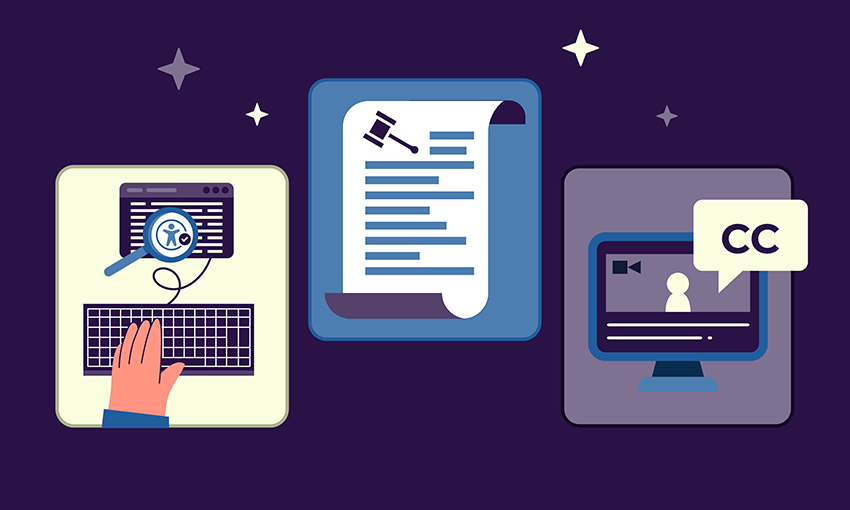Federal Mandates for Accessibility Benefit Everyone at OIT

Every day at OIT, our workplace is enhanced by federal mandates created to benefit people with disabilities. Whether someone has a permanent or temporary disability, such as a broken bone, carpal tunnel syndrome, or other injuries, the laws ensure we can all access information, technology, facilities, and more.
Here are a few examples of how these mandates allow everyone to access information easier:
Rehabilitation Act of 1973 (RHA)
The RHA is a federal law that prohibits discrimination against people with disabilities in federal agencies, federal contracting organizations, and programs receiving federal funds. This law:
- Increases awareness of disabilities among the public
- Promotes a more inclusive work environment and expands employee diversity
- Ensures employees with and without disabilities are protected from retaliation for exercising or inquiring about their rights and reporting discrimination
Section 508
Section 508, an amendment to the RHA, requires federal agencies and contractors to provide accessible information and communication technology (ICT). This amendment recommends:
- Keyboard-accessible websites
- Volume controls on media players
- Easily navigable and predictable user interfaces
- Zoom meetings with captions and transcripts that clarify speech and enable users to skim content
- Online forms with clear labels and instructions
21st Century Integrated Digital Experience Act (IDEA)
Signed into law in 2018, IDEA ensures digital products are:
- Modern, responsive, and accessible
- Fully functional on a variety of devices, like mobile phones
- Designed around user needs using qualitative and quantitative data
- Consistent and predictable to enable easier navigation for everyone
Section 255
Section 255 of the Telecommunications Act of 1996 requires manufacturers to provide accessible telecommunications products and services, including hardware and software, cell phones, voicemail, caller identification, and more. Because of Section 255, we benefit from the use of:
- Universal design principles that enable products to be used by the broadest audience
- User guides, installation instructions, and product support
- Increased call volumes and speaker functionality
Visit PlanetOIT for more accessibility resources, including:

